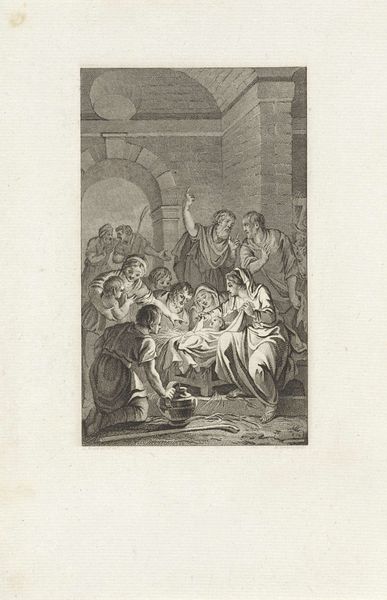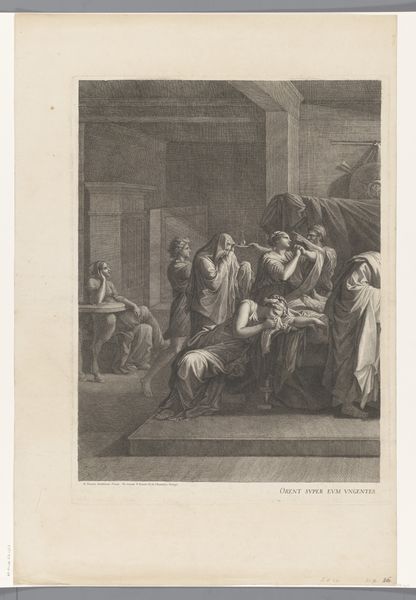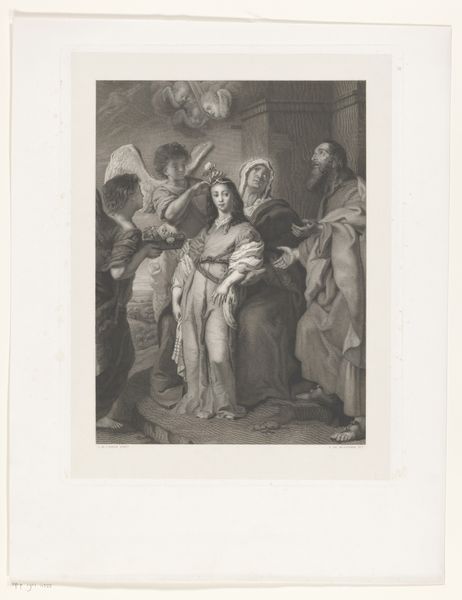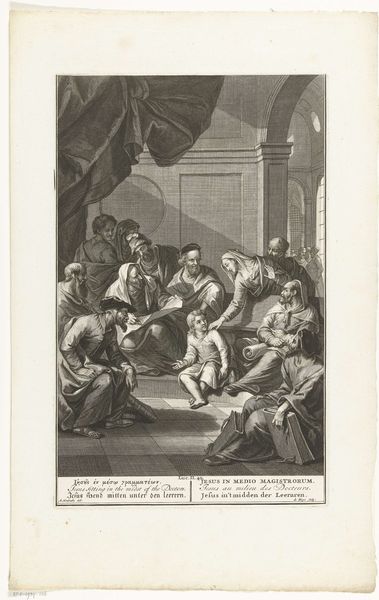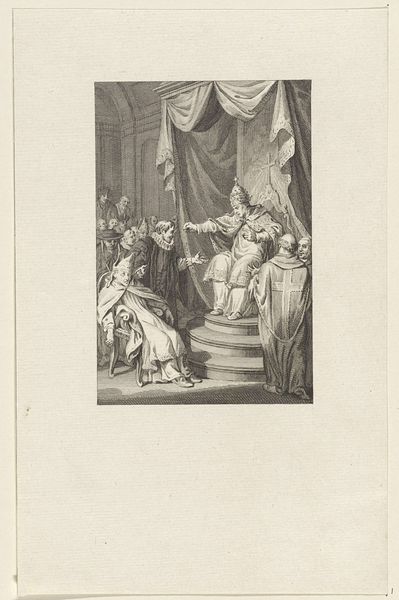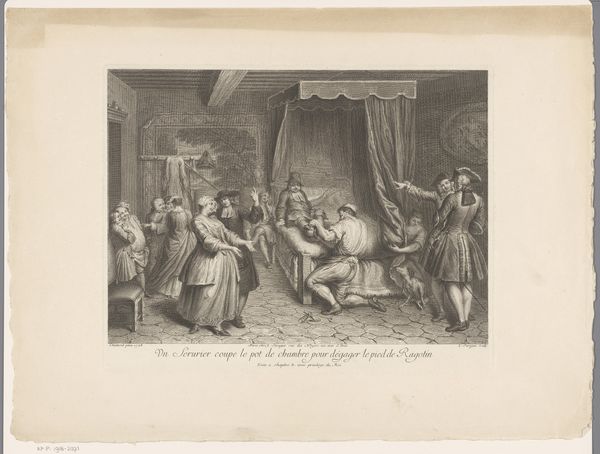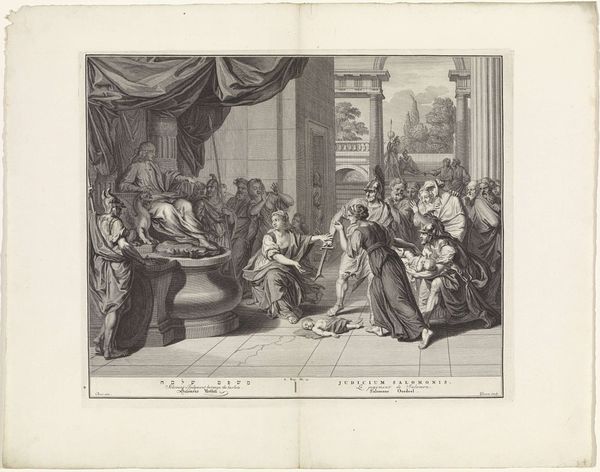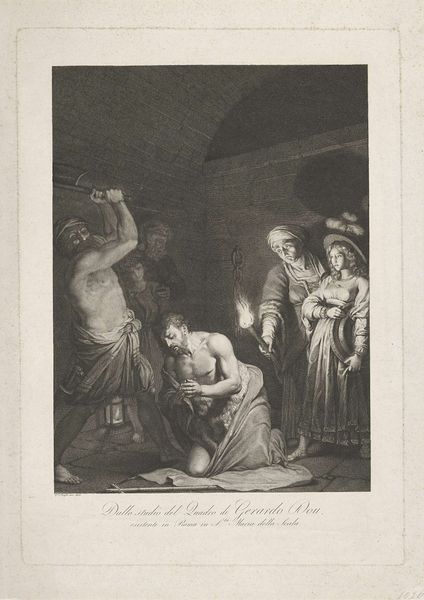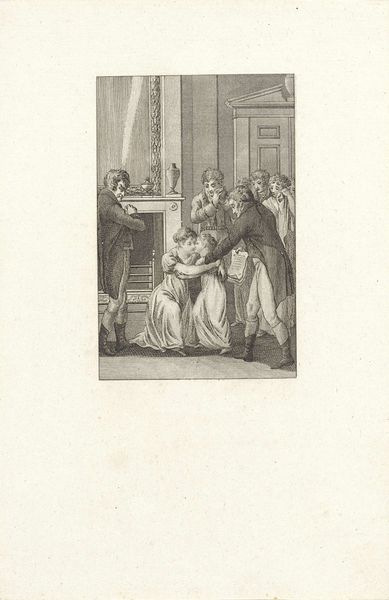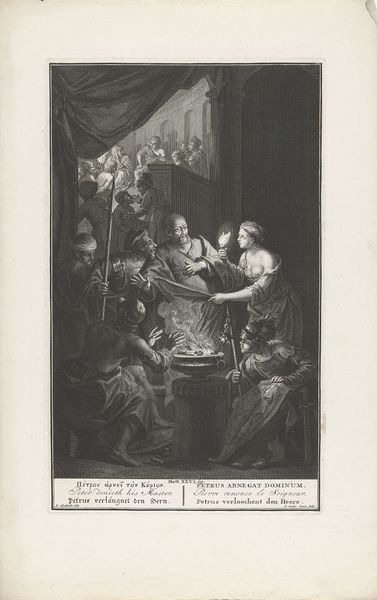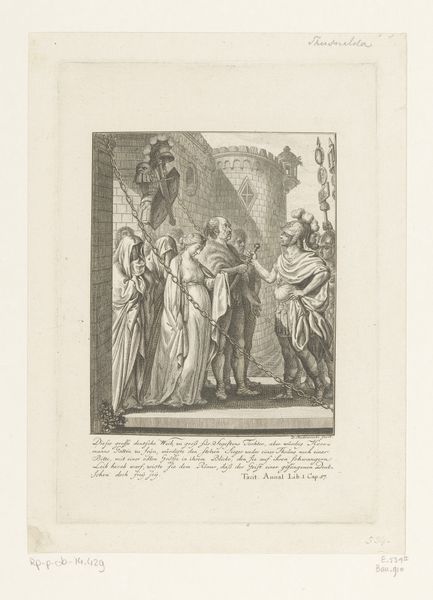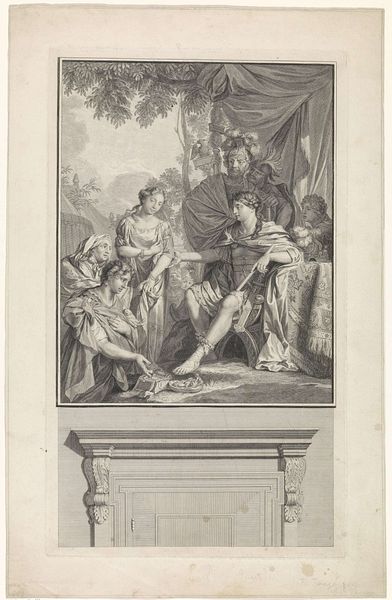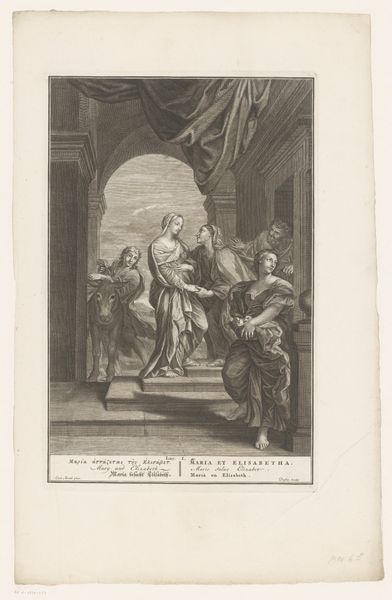
print, engraving
#
baroque
# print
#
figuration
#
line
#
history-painting
#
engraving
Dimensions: height 363 mm, width 232 mm
Copyright: Rijks Museum: Open Domain
Curator: Here we have Abraham de Blois’ "The Entombment of Christ," an engraving made sometime between 1679 and 1728, now housed here at the Rijksmuseum. Editor: Immediately, the tonal contrast jumps out. The scene is so dramatically lit; almost theatrical. Curator: Precisely. Notice how de Blois uses stark contrasts and tight, controlled lines to direct our gaze? The focal point is, without a doubt, Christ's body, rendered with a luminous quality amidst the surrounding darkness. Consider the composition, its structured arrangement—almost geometric, if you consider the angles formed by the bodies and architecture—reflecting the Baroque ideals of order and reason. Editor: I’m drawn to the hands of those carrying Christ, though. So much careful labor and consideration must have gone into printing an image like this. You’re reproducing an idea of human pain and suffering by manually controlling every mark on the metal. What sort of workshop dynamic allows for such dedication to a mass produced image of something so intimate? Curator: An astute observation. We can’t overlook the role of workshops and apprentices in the making of these prints, the collaborative labor intrinsic to its production and the economics and social systems necessary to make it possible. But even within a potentially democratized print medium, do you note the formal rigor the figures’ draped garments present? The dynamic folds accentuate the drama while also echoing the curves of the cave and emphasizing the emotional depth inherent in the scene. Editor: All those tiny controlled lines give such a precise sense of texture and form—the weight of the stone, the coarse weave of the burial cloth. There’s also an economic component to these textiles, I’m sure. I’m mostly interested in what it means to see death reproduced by an industrialized print culture. Curator: I am compelled by the structured nature of this grief, framed so perfectly by De Blois. The emotionality of the scene, carefully calculated and impeccably rendered, remains ever captivating. Editor: It is astonishing to consider the skill and time required to realize an image of loss through such laborious reproduction. An intricate weaving of labor and lament.
Comments
No comments
Be the first to comment and join the conversation on the ultimate creative platform.
